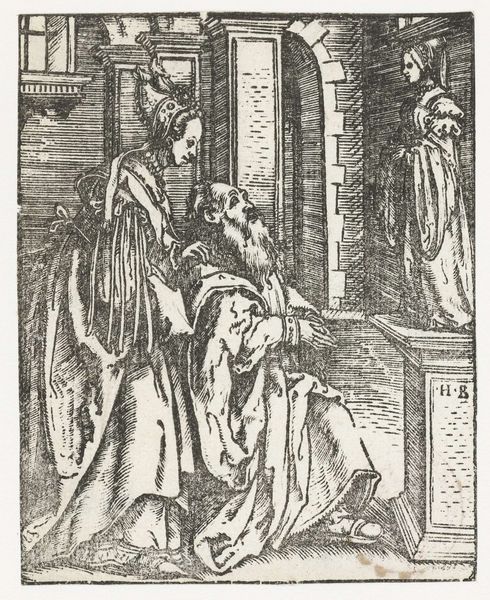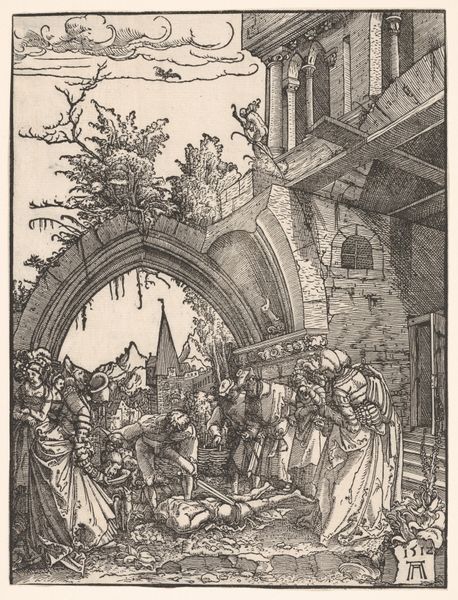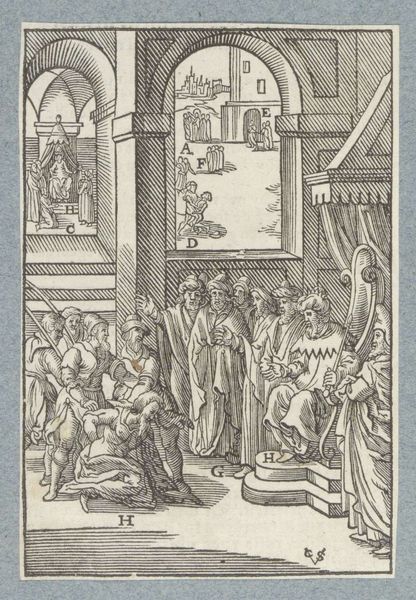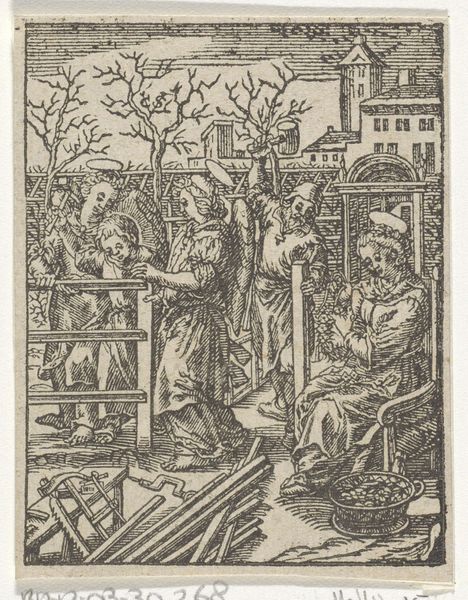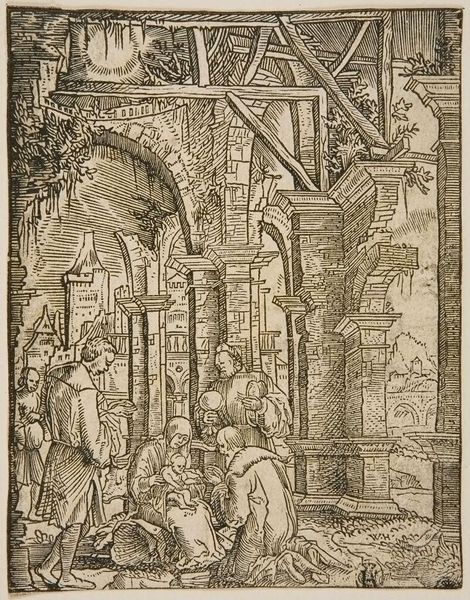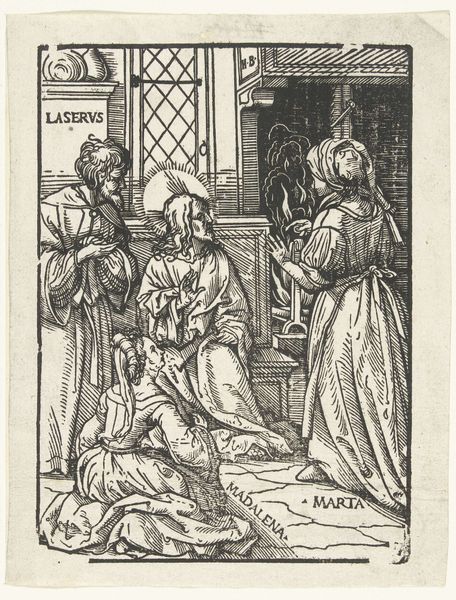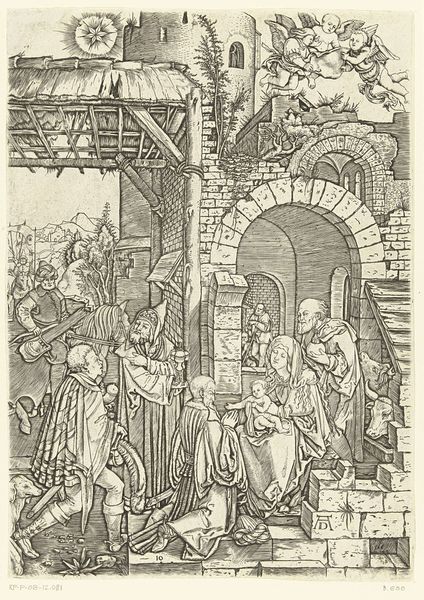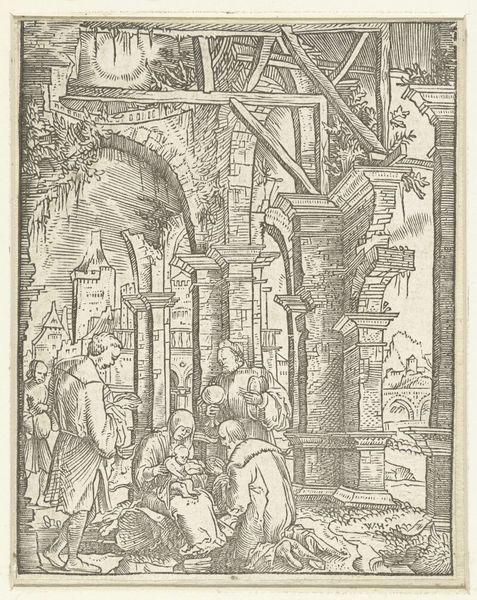
print, ink, woodcut, engraving
#
narrative-art
#
pen drawing
# print
#
landscape
#
figuration
#
ink line art
#
ink
#
woodcut
#
line
#
genre-painting
#
northern-renaissance
#
engraving
Dimensions: height 116 mm, width 90 mm
Copyright: Rijks Museum: Open Domain
Hans Burgkmair’s woodcut, "David sees Bathsheba bathing in his garden," depicts a scene laden with biblical and cultural significance. Here, the image of Bathsheba bathing is not merely a depiction of a woman, but a symbol of temptation, desire, and the consequences thereof. The act of bathing, often associated with purification, here becomes a moment of vulnerability, a turning point that leads to transgression. Consider, for instance, how the motif of the nude woman bathing has recurred through art history, from ancient Roman bathhouses to Renaissance paintings. Each iteration carries its own charge, yet all echo a primal fascination with the exposed human form. But, the image also touches upon the voyeuristic gaze and the abuse of power. It’s a powerful psychological exploration of the relationship between seeing and desiring, and the way that desire can lead to moral compromise, engaging us on a deep, subconscious level. And so the image, like so many others, resurfaces, evolves, and takes on new meanings in different historical contexts.
Comments
No comments
Be the first to comment and join the conversation on the ultimate creative platform.
